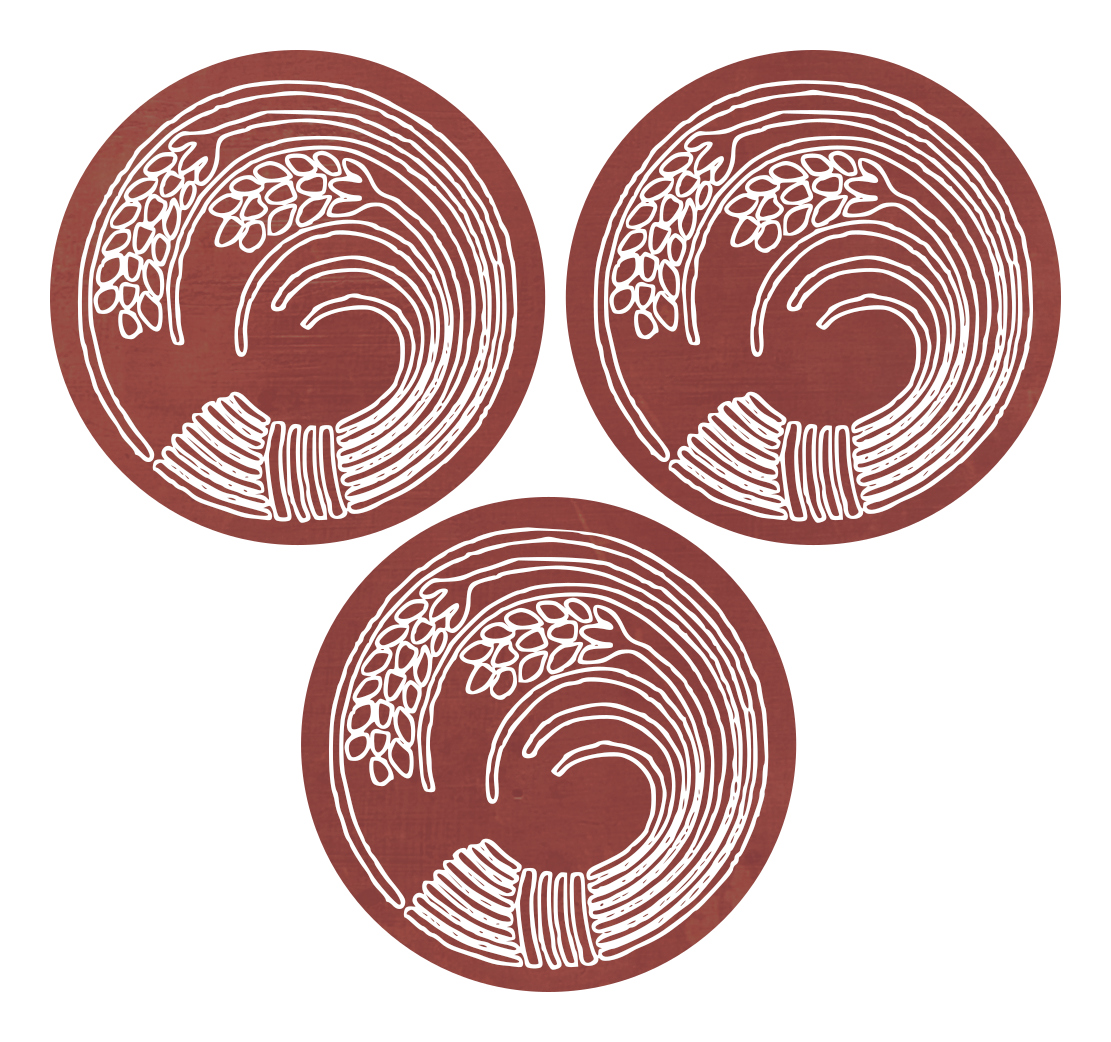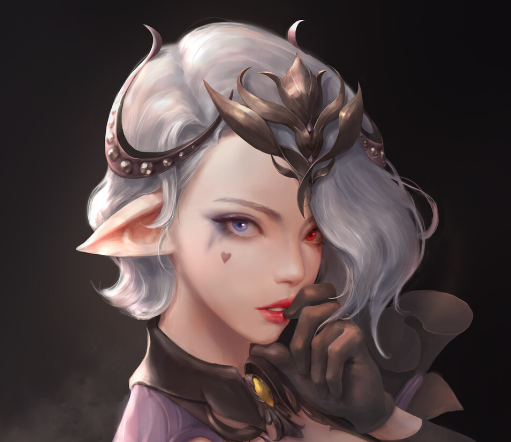Early Years
House Liu were birthed from
House Ahiro, and take their name from
Ahiro Liu - the man who cemented their nobility.
Liu inherited a small rice farming operation from his father, a second son of the house of Ahiro, and made it a success. House Ahiro were untitled landholders in the province now named for them, called Hari at the time, and wile Liu's elder brother inherited the family estates, Liu was allotted a small farm on the edge of his brother's estates. Across the following decade Liu expanded his farm and brewery with savvy acquisitions and marriage to the heiress of his rivals of House Heij, taking their farms and subjects under his wing.
While Liang's trade as a whole was declining, with houses unwilling to expand abroad in a climate of growing xenophobia and the colonies on
Okinochi lost a scant decade earlier, Liu pushed ahead. He gambled on trade expeditions, but exports of his rice wines proved popular in
Tulan and
Morioka. Liu began a regular trade passage, taking also local porcelain, fine smoked fishes and dried spices. It proved a lucrative journey, and the Liu family began to swell with wealth.
Twenty years after his inheritance, Liu purchased his father's farm when his brother fell ill. A year later, his family was granted formal recognition as a cadet house of Ahiro, yet in time they would surpass them. The title of Meike was granted to House Liu in 2603 YSB, ushering them into the lower nobility.
Ahiro Liu was followed by three sons, who each established a successful business from the divvying up of their father's large estates. However Liu Chi's descendants would rise the highest.
Their business was considered a local institution by the 29th century, the fifteenth generation of Liu's descendants managing and running it. Their relationship with the Ahiro remained strong, and the Ahiro clan had expanded into shipping to serve the growing demands of the Liu business.
When the congregation of shrine priests met to decide the future Shen upon the death of the last of House Yahui, fortune turned her face towards house Liu.
When evening had come with its dark embrace, and the palace was quiet except for the sound of old timber yawning in quiet little squeaks, we'd creep from each of our chambers - him from the royal boudoir, and me from among the servants hall. We'd meet under the orange tree on the edge of the grounds, and I'd remember how to love, even when everything else felt grey.— From an anonymous journal found in Shen Kusha's papers.
Their respectable status, untarnished reputation, and lack of ties to court politics aligned them as the priesthood's choice.
Liu Kusha, recently head of his family and only 21, was elected
Shen. He was handed a nation on the verge of economic ruin.
The weight of a crown
In his early years, Kusha sat on a throne beset by troubles. The former Yahui dynasty had run Liang into debt, the navy had been left to rot, and the nation had plenty of spite directed towards its government.
Kusha wielded the support of the clergy regularly in his first decades on the throne. Yet he made only small strides in progress for many years. Successful attempts were made to modernise the royal bureaucracy and begin to rebuild the national military. Kusha forced many royal courtiers to step down from positions, most notable in his exile of the treasurer Shin Kamui who was executed for embezzlement of state funds.
Kusha filled the court with more qualified officials and ruthlessly punished corruption in order to restore public trust in the institutions they served. He established a royal library, and abandoned the Yahui families lavish Golden Palace for the more humble Throne Palace of their predecessors. The Golden Palace and its grounds were transformed into a public park for Dien Chen's citizenry, part of his campaign to restore the monarchy's reputation. Members of House Liu were carefully monitored, and punished for infractions that might reflect badly on the government.
Remaking the nation
The
golems introduced by
Juventius transformed both Kusha's reign and the wider world. Kusha took the opportunity it offered to break the power of the nobility, and eagerly imported Golems. He set the
Shen's Wuzin to studying and replicating the magic.
In time, the crown weighed heavily on him. I watched the little grey hairs gather, and his smile become so rare. I pleaded, that he rest his mind, but so many demands were made that he felt he could never escape.— Anonymous
Liang, so isolated from the global economy and trade, was sheltered from the ensuing disruption that golems bought to trade and production.
Kusha's early adoption of the magic meant that Liang moved right into the next century, while its neighbours attempted to cling to tradition and flailed against the unrelenting change reaching their shores. Golems transformed agriculture in Liang, and the royal monopoly on their production gave the crown enormous power.
Kusha was able to break the back of the nobility, who had held much of the wealth of Liang. Without his golems, they were hopelessly archaic and had no hope of competing with the royal house. From his personal estates alone, Kusha could feed a small city. After a year of stalemate, during which Kusha amassed both civil and military golems, the five families of the high nobility signed a treaty that broke their back, but was their only hope of survival.
The five families renounced many of their lands inherited over the centuries, which were divided among fifteen new provinces. The families, reduced to their ancient homelands, were granted titles in the new nobility. However they were not alone, and a new nobility was established to counterbalance their influence. Among these were House Ahiro elevated to the highest title of Sekke, and the House Inseki - hereditary guardians of the shrine of the Pele (God) of the capital city of
Dien Chen. Fourteen other families were also raised from respectable merchant houses and granted provincial governorship.
Prosperity
They cut the orange tree down that year, to build new quarters for the cooks. I watched from a distance. He never came to say farewell to the old boughs.— Anonymous
Kusha granted golems to the entire nation, yet retained royal control of their production - assuring his dynasties reign, yet benefiting his people. Agricultural yields rose, and so did the valuable product Liang had to export. Kusha turned his citizenry to production of fine goods, exotic foods, and civic projects, when they no longer needed to turn their hand to simply making enough food to eat.
His successor, Juzo, took the throne in 2920. By then, the world's nations had began to recover their feet and Liang was ready to sell them whatever they could want. Liang's new cottage manufacturers exported porcelain, rice wines, fine fabrics, exotic smoked foods and spices, fragrant oils, art and fine jewellery on vast treasure barges funded by House Ahiro. They returned laden with foreign luxuries, great minds, and news of the latest advances in magic.
Juzo reigned 46 years, and during his leadership he pioneered vast civil projects - constructing public schools, libraries and town halls across the nation. He also established the national work programthat continues today. In return for their yearly food allotment, citizenry contributed to government projects in whatever capacity their skills lay for a scant few weeks. This system proved successful, for the entire nation's population dedicated, even for a few weeks, to one project allows great progress to be made.
The Holy Empress
Juzo's successor and daughter Nara was best known for restoring the walls of
Dien Chen, and a great project to improve and repair the shrines of the nation. She was popular with both citizens and the clergy. Under her leadership, great translations and transcriptions of ancient holy texts were also undertaken, and libraries of copies of important ancient works - of philosophy, history, religion and science - were distributed to each of the important temples in Liang.
She gained the moniker of the Holy Empress for her dedication to the
Angjao religion.
Legacy of Mino the Old
Mino the Old succeeded too emperors of scant note - Asugi and Maniseri. Mino would eclipse them both, reigning for seventy eight years. He left the throne only upon his death at age ninety five. His reign led to the great revitalization of the
Shen's Wuzin, and the restoration of the Throne Palace to its ancient splendor.
He also built the trading port of
Kuzoshi, and established regular voyages to
Petassius for their prized wood.
An artistic culture flourished under Mino, and the still young noble Sekke houses patronised artists, poets, musicians and courtesans alike. More negatively, a slave trade of exotic foreigners began to form. These slaves were considered more like beloved pets than property, coveted for their beauty. Many were sex slaves, but others were mere curiosities, or served as novelty bodyguards.
Foreigners of exotic appearance and
Aeondra and
Whisper were particularly prized, usually purchased from families as children.
Now, its time to write the final lines. I regret few things, for my life was good. I regret losing him. I lost him to his people. Their needs weighed so heavy, and it crushed his spirit. I hope he finds happiness, but my time has come. It hurts, rattling in my lungs. I don't know if he remembers me. I hope when his heart is heavy, he'll smile and think of those warm nights.— Anonymous
The quiet Shen
Yoshitu took the throne upon the death of his grandfather Shen Mino. His reign was not particularly notable, though he became known by the epithet of the Beast Lord for his laws against the abuse of animals. He was succeeded by his son Toujou, who ruled a peaceful period from 3086 to 3127 and was best known for having built a new wall around the growing city of Dien Chen.
Somanagi succeeded him, ruling for fifty years. Despite his long reign, he made few changes during the period, though he fortified the port of Dien Chen with a new lighthouse and sea walls. He was also called the Dull Emperor by his deriders, and was said to struggle with the duty of ruling, leaving many duties to his daughter Namika. She took the throne when he died at age 99, but ruled for only three years before her own death.
The modern Shen
Shen Hara led modernisation of the royal court. He relieved many bureaucrats of their duties, trimming the royal bureaucracy to its essentials, and established a small tariff on import by foreigners. He established a second court in Kuzoshi, and began a tradition of the royal court moving to Kuzoshi for the winter. In this, he aimed to please the nobles of north-west Liang, who were often distant from and ill informed of the royal court's daily undertakings.
He encouraged high fashion within his court, a personal interest, which led to a renaissance of weaving and fabric artistry. The traditional white opalescent
Rikku fabric remained. However Hara's rule saw garments highlighted with golden thread, vividly dyed hems and shockingly bright jewellery gain popularity, to take advantage of contrast with the white garments of the nobility.
He married a member of the distantly related Ahiro clan, but spent most of his time with his male harem. He had two children with his wife only out of necessity. His lifestyle led to the promotion and popularisation of the concept of
Seiano among the nobility, where male nobles would keep a harem of lower class men as lovers and advisors.
Gosuna, his heir, continued this tradition. He reigned for only ten years, and suffered an early death to an infected wound gained while training with his swordsmaster. His only child, daughter Jia, took the throne.
The Empress of Diplomacy
Jia took the throne at age forty. Under her father, she had trained in court intrigue, diplomacy and business. Her rise to favour among the court is widely credited to her quick wit, humour and diplomatic skill. She proved herself able to settle disputes amicably young, and when she took the throne this tradition continued.
In her reign of a decade, Liang's diplomatic horizons have expanded, and regular diplomatic contact with nations as far afield as
Debenya has been restored for the first time in centuries. She established a series of embassies in every national capital half way through her reign, which has served her well since. For the first time in centuries, a monarch of Liang married a foreigner when Jia wed to the second Prince of
Atarashi,
Aki Zeshin of
House Zeshin.
House heraldy
Royal Seal of House Liu
The royal seal of Liu is three traditional shallow wine drinking dishes, decorated with swirling rice. It is also sometimes presented without the rice, in places where the symbol would be too complicated to reproduce, appearing as just the three red circles.
House Liu has, befitting its position, accumulated a number of royal regalia over time. The seal of the house is a legacy from before they assumed the friend, and Shen Kusha chose not to change it in respect of the house's heritage. However upon ascension this seal was complimented by a newly commissioned battle standard. The three circles of the familial seal are set upon a pale green field in the battle standard. This flag is used for the military units, and flown on ships of the Liang navy.
The national motto
"Fell no tree" comes from an old proverb of the Liu family;
Fell no tree, and be as their roots.
















Absolutely amazing work Isaac. Just one comment on the prose [...] good. But I regret [...] that but is really not needed and I think that this piece needs a bit of tidying up to make it flow better. <3
World Anvil Founder & Chief Grease Monkey
Twitter | World Anvil Changelog
“No act of kindness, no matter how small, is ever wasted.” - Aesop
Thank you. Fixed that, good point. <3 Much appreciate the feedback Dimi.